GT investigates: Review of 40-day response
How COVID-19 was detected and stemmed in Wuhan
Editor's Note:
December 27, 2019 marks the starting point for China's battle against the novel coronavirus. It was on that day that Zhang Jixian, a doctor at the Hubei Provincial Hospital of Integrated Chinese and Western Medicine, first reported cases of what was then called a "pneumonia of unknown origin." One year has passed, with the wounds the lethal virus inflicted on Wuhan gradually healing, although some Western countries are still leveling blame against China for its initial anti-virus response. It is meaningful and necessary to review the first 40 days following December 27, 2019, to see how the medical staff in Wuhan strived to save patients' lives, what the residents experienced and how the enormous nation-wide aid to the city helped restore order.
This is the fifth in a series of in-depth articles the Global Times has published as the year draws to a close. The previous reports probed the possibility that Wuhan's outbreak was caused by imported cold-chain products, delved into China's stricter management of imported frozen products, charted Wuhan's reemergence from the epidemic one year on, and took stock of the different patterns adopted by China and Western countries in fighting the virus. Here we pay tribute to the remarkable efforts of the people of Wuhan, and those who came to help them in their time of need.
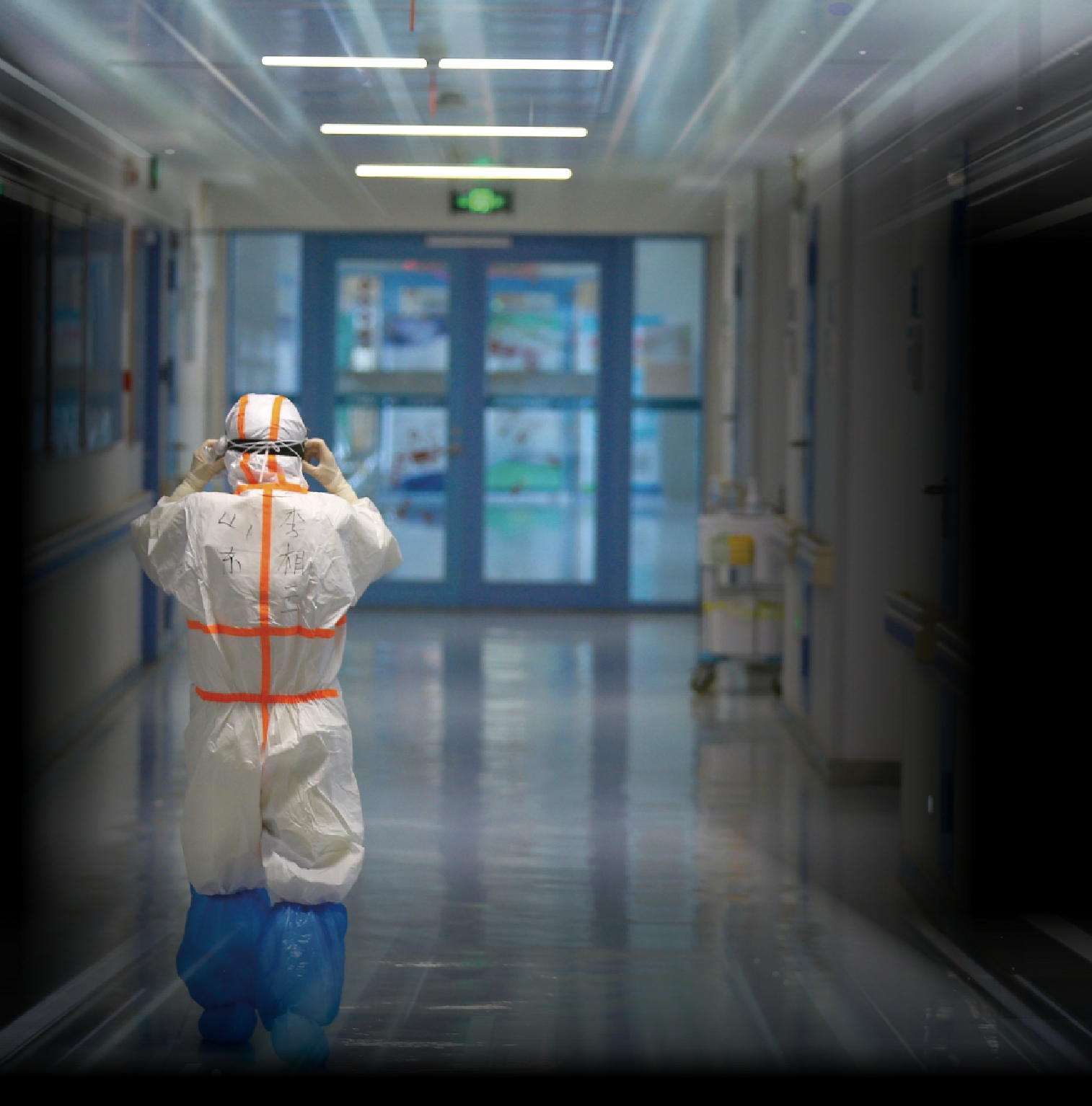
Photo: Cui Meng/GT
Raising alarm
For Xie Yu (pseudonym), a 37-year-old civil servant in Wuhan, capital of Central China's Hubei Province, her memories of the days approaching year end of 2019 are vague. "I'd planned for days to celebrate the New Year with my colleagues on the beach by the Yangtze River, but in the end, I worked overtime on December 31 and shared some late-night snacks with a few friends."
Having lived in Wuhan all her life, Xie said that she had experience of going through a major disaster when the city suffered catastrophic floods in 1998. But 2019 had been largely uneventful, and she and the other 11 million residents of the city never imagined that such a great danger was lurking underneath their peaceful life.
Doctors and medical professionals remember the end of 2019 quite differently.
On December 27, 2019, Zhang Jixian, the director of respiratory and critical care medicine department of the Hubei Provincial Hospital of Integrated Chinese and Western Medicine, noticed four patients from two different families who were displaying similar symptoms - a cough, fever and infected lungs.
After the patients had CT scans, she diagnosed viral pneumonia and in addition found that these patients could all be linked to the nearby Huanan wet market. She reported the situation to Jianghan district center for disease control and prevention.
December 27, 2019 was later identified as the starting point for China's fight against the coronavirus epidemic according to the white paper released by the State Council Information Office in June.
"After reporting the situation, our hospital organized a discussion on the cases on December 29, 2019 - a Sunday I remember - attended by disease control and prevention authorities at district, city and province levels," Zhang Jixian told the Global Times.
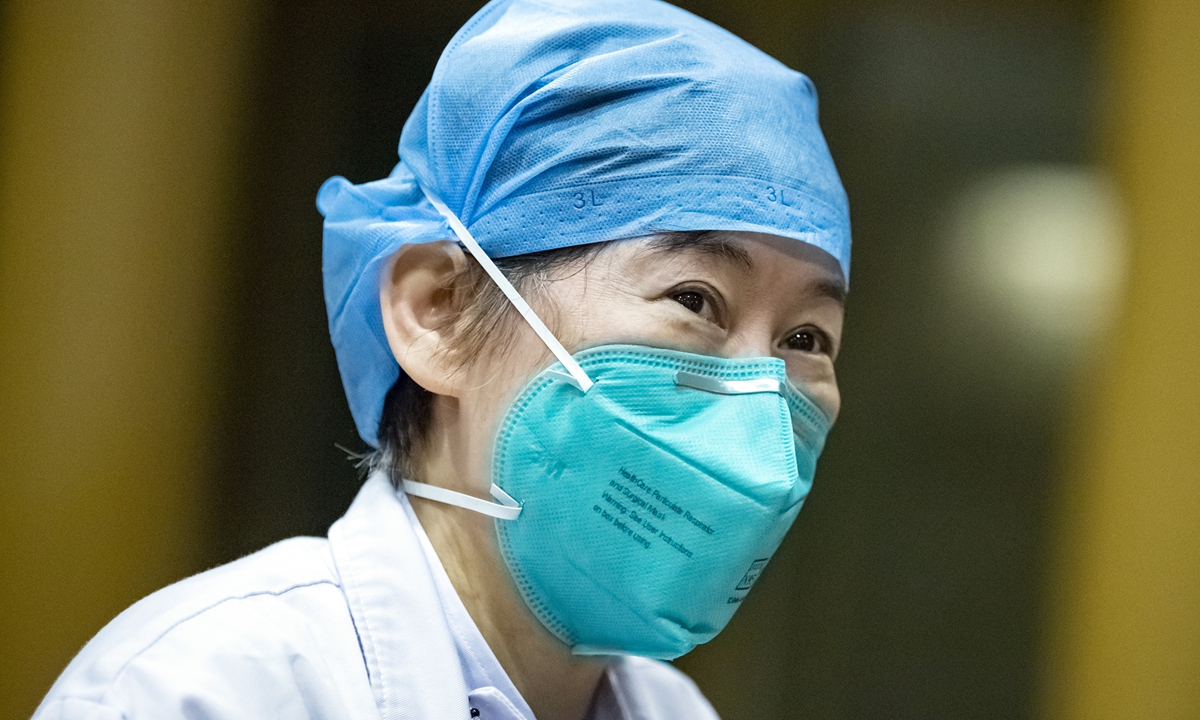
Zhang Jixian, the Wuhan doctor who reported an unknown pneumonia on December 27, 2019. Photo: Xinhua
At the same time, more patients with similar symptoms were found in the Central Hospital of Wuhan, another hospital close to Huanan wet market. Tao Jun (pseudonym), told the Global Times that the hospital admitted four patients who were exposed to the wet market, and they displayed symptoms of fever and infectious lungs on December 28 and 29, 2019.
On December 30, the Municipal Health Committee of Wuhan released two notices, saying that patients suffering with an unknown pneumonia were found in Huanan wet market and all medical institutions were required to check for patients suffering pneumonia symptoms. The next day, it released its first notification on the situation, saying that 27 cases of pneumonia were found related to Huanan wet market, and it said the disease is "preventable and controllable."
Wu Zunyou, chief epidemiologist of the Chinese Center for Disease Control and Prevention (CDC), told the Global Times that China's CDC director Dr George Fu Gao acknowledged the incident and immediately reported to the National Health Commission, which dispatched a group of experts to Wuhan on December 31.
On January 1, the National Health Commission set up a leadership working group, and Huanan wet market was closed. On January 3, the information about the disease was shared professionally with the World Health Organization (WHO) and other countries, particularly the US, Japan, South Korea, the UK and EU.
"When I was asked why we didn't notify Chinese people on January 3, I have to clarify that we have built a communication mechanism with other countries since 2003 under the regulations of the WHO."
Wu said that "when we humans encounter sudden, unexplained events with potentially major crises, we inform each other. This is a professional communication. Although there are unclear points, we understand each other, and we can inform each other. But if one question remains unclear, and we inform the society, it will cause social panic."
What happened later in Wuhan proved Wu's worries were correct.
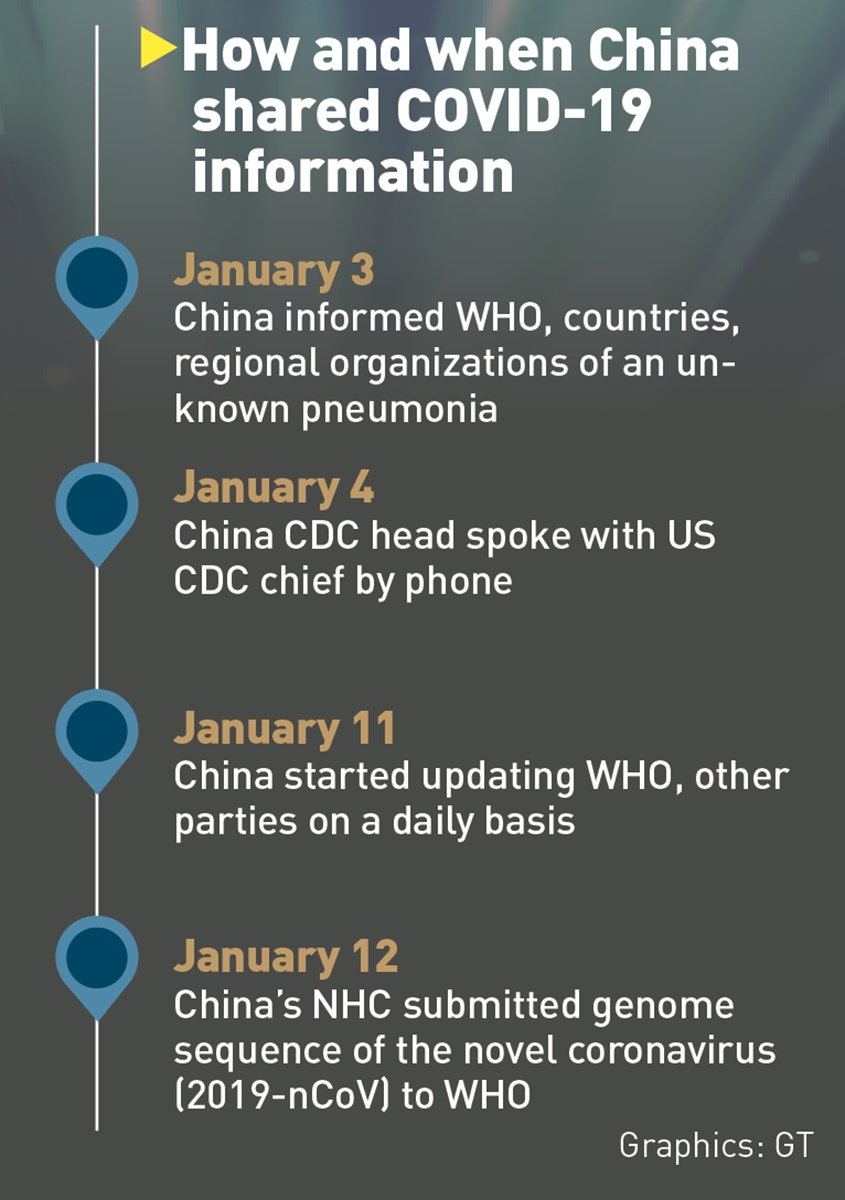
She recalled that at that time, few residents in Wuhan sensed the coming danger as they continued their leisurely lives at the end of the year, shopping for the coming Spring Festival, gathering with friends and enjoying the nightlife.
Although Wuhan health committee urged people to wear masks outside and avoid crowds on December 31, a grand party on the river side on the night of December 31 saw more than 10,000 attendees, and pictures posted on local news outlet cjn.cn showed people standing in crowds either not wearing masks or pulling their masks down under their chins.
On January 20, Zhong Nanshan, a senior advisor to the expert team of the National Health Committee told the public in an interview that there was human-to-human transmission for the novel coronavirus and that 14 medical staff had been infected.
Zhong's remarks seemed to ignite the public's fears, with many people swarming into hospitals and clinics.
There were lines stretching for kilometers outside major hospitals. An employee of Tongji Hospital told the Global Times that doctors and nurses "felt really desperate" when they saw so many people. It meant the risk of cross-infection would increase.
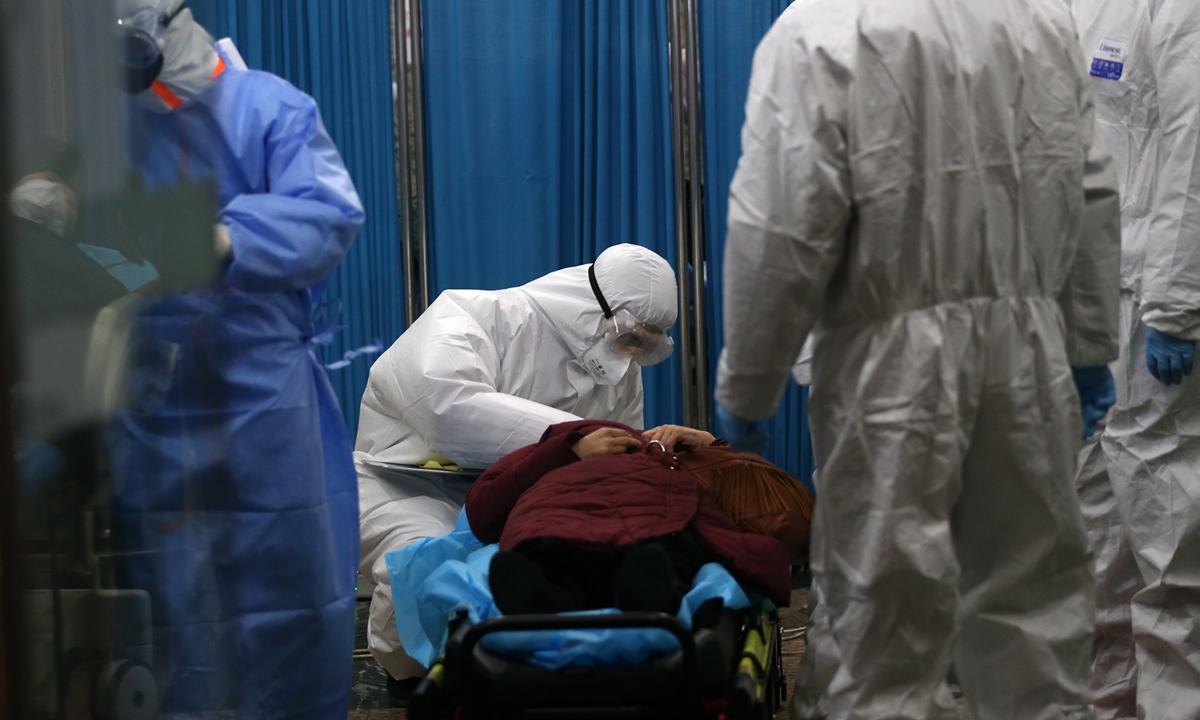
Photo: Cui Meng
Zhang Li, an employee from a state-owned company in Wuhan, told the Global Times that she had a fever on January 24, but before going to hospital, she didn't believe the virus reported by TV news had anything to do with her.
"I was astonished by the sea of people in the hospital. Some seniors brought a quilt so they could rest while they waited for the doctor."
The difficulty of getting a hospital bed amid a huge panic over an unknown disease angered many Wuhan residents, who criticized the local government's incompetence in timely information disclosure and the mismanagement of medical resources in the early days of the outbreak.
Some questioned why the government failed to reveal that the virus could be transmitted from person to person. Many demanded an apology from Wuhan health authorities to Li Wenliang, a doctor from the Central Hospital of Wuhan, who sent out early warnings of the outbreak on social media but were reprimanded by local police.
From December 31 to January 21, Wuhan health committee released 17 notifications on the "unknown pneumonia" and the first five said "there is no evidence of human-to-human transmission." On January 15, it released a notice saying that human-to-human transmission was possible and that it was not ruling out any evidence, but that the risk of continuous transmission among people was low.
Still, there were cases of medical staff getting infected. Lu Jun, a doctor in the emergency department of Tongji Hospital in Wuhan, found he had a flu-like symptom on January 5. Before then, he and his colleagues had treated a multitude of patients that had flocked to the fever clinic and were transferred to his department.
"I thought it was flu at first, but my symptoms developed fast and about nine days later, I had to use a ventilator to help me breathe," Lu told the Global Times.
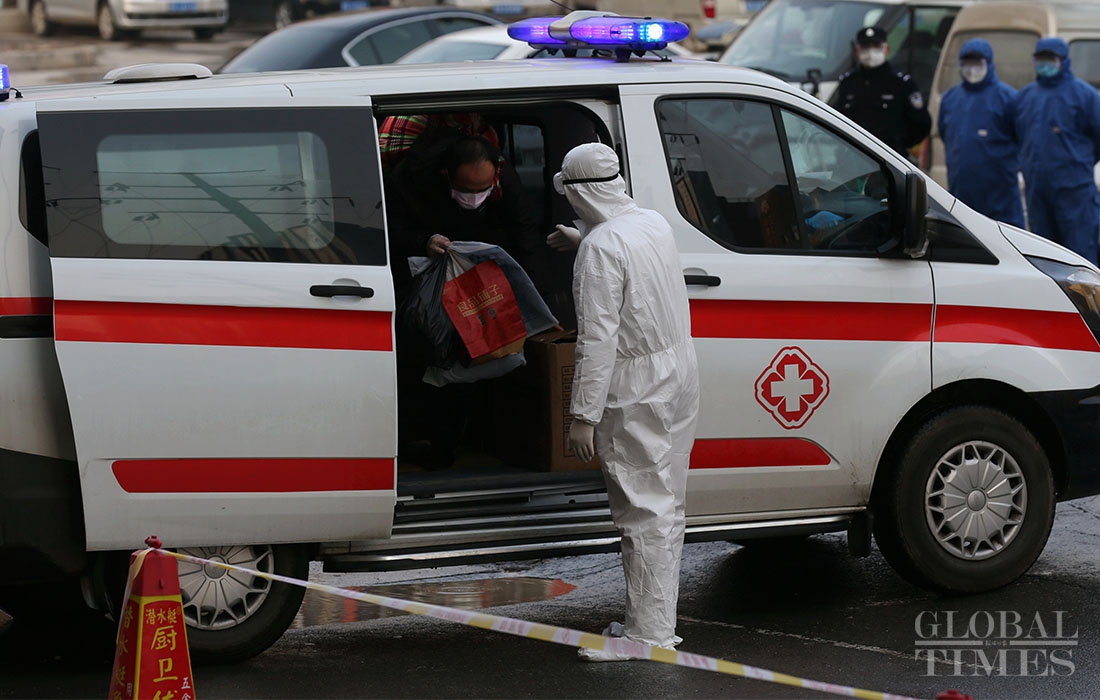
Suspected patients arrive at a centralized isolation point in Wuhan on Tuesday. Photo: Cui Meng/GT
Wang Guangfa, a respiratory expert at Peking University First Hospital in Beijing, also part of the first expert team that traveled to Wuhan in January, told the Global Times that while he was there, cases with no direct connection to Huanan wet market were detected. "That's when we suspected the virus could pass from person to person."
Wang and other experts returned to Beijing and reported their findings to the National Health Commission on January 16. "We said that we may be underestimating the virus, but we have no solid proof of human-to-human transmission."
Wang said that transmission between medical workers is strong evidence of human-to-human transmission because it is difficult for doctors and nurses to be exposed to the same source of infection. If medical workers are infected, it is a clear indication that the virus can jump from one human to another. But the Wuhan hospitals did not reveal much information on this to Wang and other experts.
Changing moment
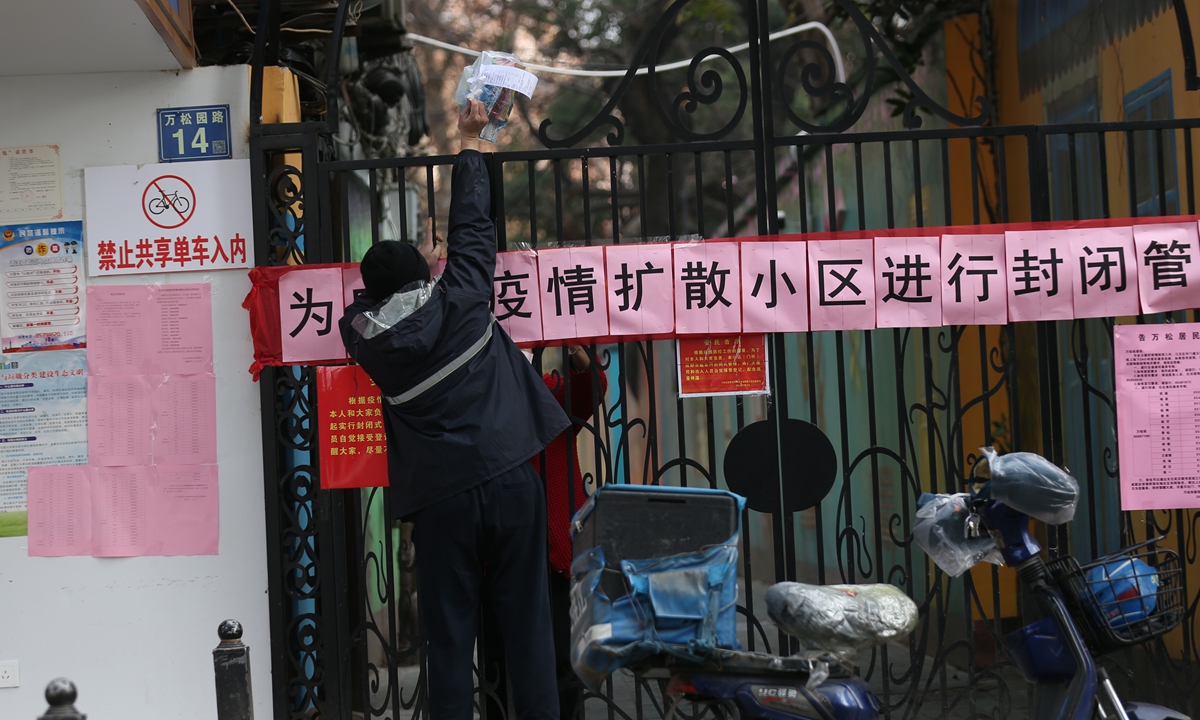
Photo: Cui Meng
As the number of infections quickly increased, the central government took a swift response. On wee hour of January 23, the Wuhan City Novel Coronavirus Prevention and Control Command Center issued the No. 1 public notice declaring a temporary closure of the city's outbound routes at its airports and railway stations starting from 10 am the same day.
The sudden announcement to lock down Wuhan caught local residents off-guard. Many tried to flee from the city.
A local resident surnamed Chen who works in Beijing, while flying back to Yichang, a city located 400 kilometers from Wuhan, heard the news at 5am on January 23 about the Wuhan lockdown, and decided to fly back to Beijing the same day. "I was afraid that if I didn't leave immediately, I may be stuck there for months without knowing when the lockdown would be lifted," she told the Global Times.
When she arrived at the airport in Yichang later that day, she was shocked to see many people driving from Wuhan, trying to escape the province. "All of them were wearing masks. Though there was no palpable panic at that moment, such a surreal scenario was heartbreaking as many had to leave their family members behind," she said.
Many residents told the Global Times that Wuhan seemed to fall into a period of "anarchy" then.
"Very few people were wandering in streets and when two people encountered at the distance of more than 10 meters, they dodged each other… I also saw a person who seemed to have been turned down by a hospital, and spit on ATM machines," Xie said, saying that she never felt so desperate and helpless in her life.
Helplessness, desperation and anger toward the local government's performance in dealing with the epidemic soon accumulated and exploded, especially on social media.
It was at that time when Wuhan writer Fang Fang caught public attention for updating her diary on the desperation of locals.
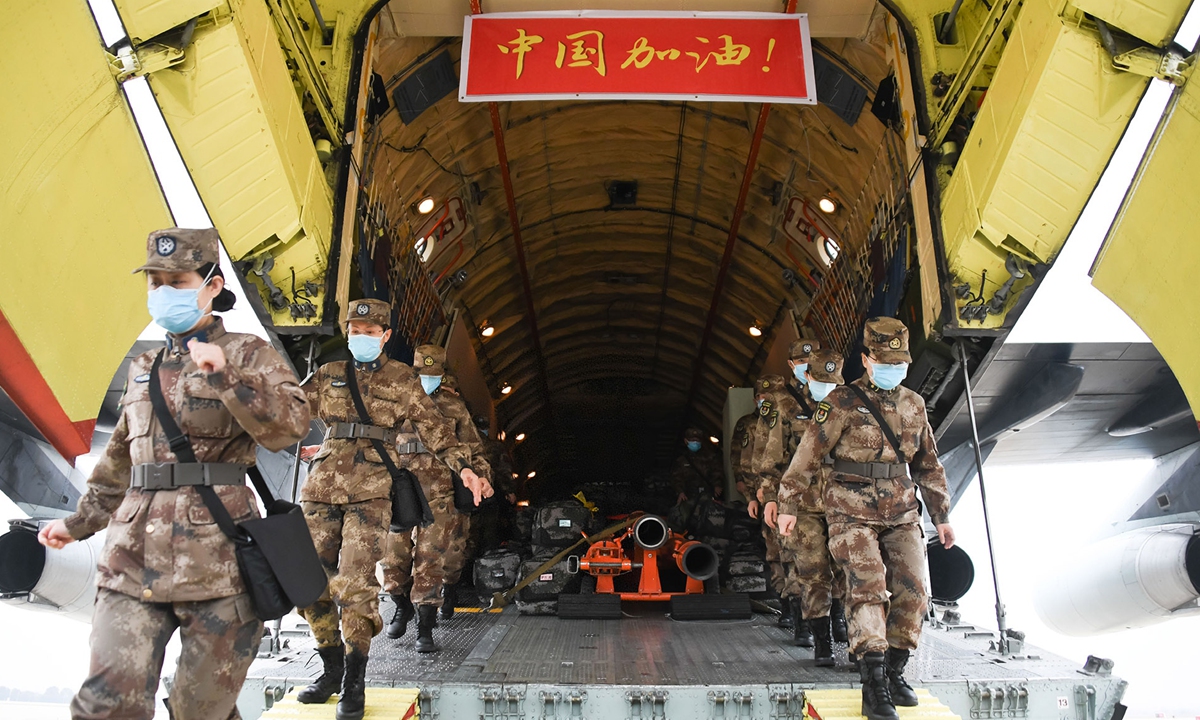
Military medics disembark an aircraft in Wuhan on February 2. The People's Liberation Army Air Force deployed eight large planes to transfer military medical teams to aid the city. Photo: Xinhua
For many local residents in Hubei, the moment when local authorities announced the lockdown of Wuhan in the early morning on January 23, it was also the moment when they realized that the most difficult part of the life was separation from family members at the occasion for family reunion.
He Aimin, a resident in Wuhan who works at the Wuhan Bus Corp., and her husband, Huang Jiayu, who is a civil servant at the Wuhan municipal government, said that the epidemic made her feel, for the first time, the fear of food shortage, which she had never imagined would happen in today's China.
Before Wuhan locked down on January 23, she, her husband and son were preparing to leave Wuhan and go back to her parents' home for the Spring Festival. They cleaned the refrigerator storage.
"I went to three supermarkets, but not even a vegetable leaf was left, nor was rice. I called my husband and said, 'we are done, nothing is left, how could we make it through?' The feeling was like, "I have money, but money could not fill the stomach."
Her husband found a small food market later. She said there were not too many people in the market when she got in, but when she came out after shopping, people already lined up.
They were comparatively lucky ones during the early stage of the Wuhan outbreak. According to her, some poor elderly people in a community she served during the epidemic could only eat one cabbage or radish in three to five days.
For Zhang Li, who had been infected by the virus and could not find a bed in the hospital after the lockdown, she decided to self-quarantine in a house in Wuchang district.
"I lived on the 32nd floor and there was no resident in upper and lower floors. At night, it seemed I was the only person left in the world," Zhang said, saying that she also wrote a letter and asked her friends to send it to her husband and son after her death.
Wu said that a day before the city decided to lock down, the number of infected cases was over 500. At that time, it was unclear how serious the epidemic was and how intense was the virus' infectiousness. "Such a wise decision reflects the foresight of the central government."
On January 30, in an interview with a Central China Television news program, Wu said that if Wuhan had not been locked down, there would have been several severe outbreaks in other places in China similar to those in Wuhan.
Wu said he was on a joint China-WHO mission from February 16 to 24, and conducted analyses with experts in the mission. He concluded that if Wuhan had not been closed, the number of infected people in China would have reached 1.5 to 2 million by the end of February. It means that the decision prevented many more from being infected, and avoided some 60, 000 deaths.
Bruce Aylward, an assistant director-general at the World Health Organization, told a briefing in February that China's unprecedented lockdown and restrictions blunted the coronavirus's spread and averted hundreds of thousands of infections.
Analysts said that the swift decision to lock down the city prevented a wider spread, and residents in Wuhan had made great sacrifices to deal with the disorder due to the local government's incompetence in after-lockdown management.
But the country never abandoned Wuhan. On January 24, one day after Wuhan's lockdown, 346 military medical teams and teams from other provinces and regions were deployed to aid Wuhan and Hubei. On January 27, the CPC Central Committee set up a central leading group in Wuhan. On February 2, Wuhan began to screen infectious patients. On February 3, 22 emergency medical teams were dispatched to Wuhan to build makeshift hospitals.
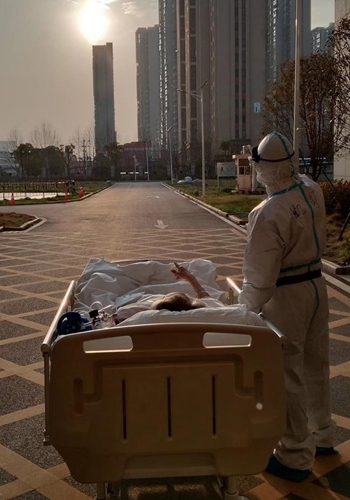
Liu Kai, a medic from Shanghai, stops with his 87-year-old COVID-19 patient in Wuhan to admire the sunset while escorting him to a medical check on March 5. Photo: Xinhua
Zhang Li said that when she heard that the whole country was mobilized to aid Wuhan and soon makeshift hospitals would be available to take patients like her, she realized that the hardest time was about to end. "At that moment, I thought I got a chance to live!"
Huang Jiayu said that when he knew the national teams would aid Wuhan, he felt his city and his family would be OK. "Things gradually calmed down since February," Huang said, noting that he and his wife were deployed to manage residential community work in mid-February.
"My wife and I now often talk about the little mess in Wuhan after the lockdown and we began to treat it as not that big. When an incident happened to anyone and any family, it is natural to feel panic. But fortunately, the Chinese government's response was swift and decisive," Huang said.
Although the national level response to the public health emergency is strong and swift, analysts also suggested learning from experience to close loopholes.
Zeng Guang, chief epidemiologist of the Chinese Center for Disease Control and Prevention, said a poor disease reporting and surveillance system, insufficient training of medical employees, and imbalanced resources of urban and rural hospitals were exposed by the COVID-19 pandemic.
Another shortcoming of China's public health system is the reporting and warning system, Zeng pointed out, urging health institutes to report suspicious cases and samples within the already established warning system, instead of bypassing it.
After the lessons drawn from COVID-19, the warning system is expected to play a bigger role in the future, and government and medical employees will be more transparent when facing suspicious diseases.
Reporting by Zhao Yusha, Cao Siqi, Liu Xin, Leng Shumei and Li Jieyi in Wuhan and Chen Qingqing in Beijing




